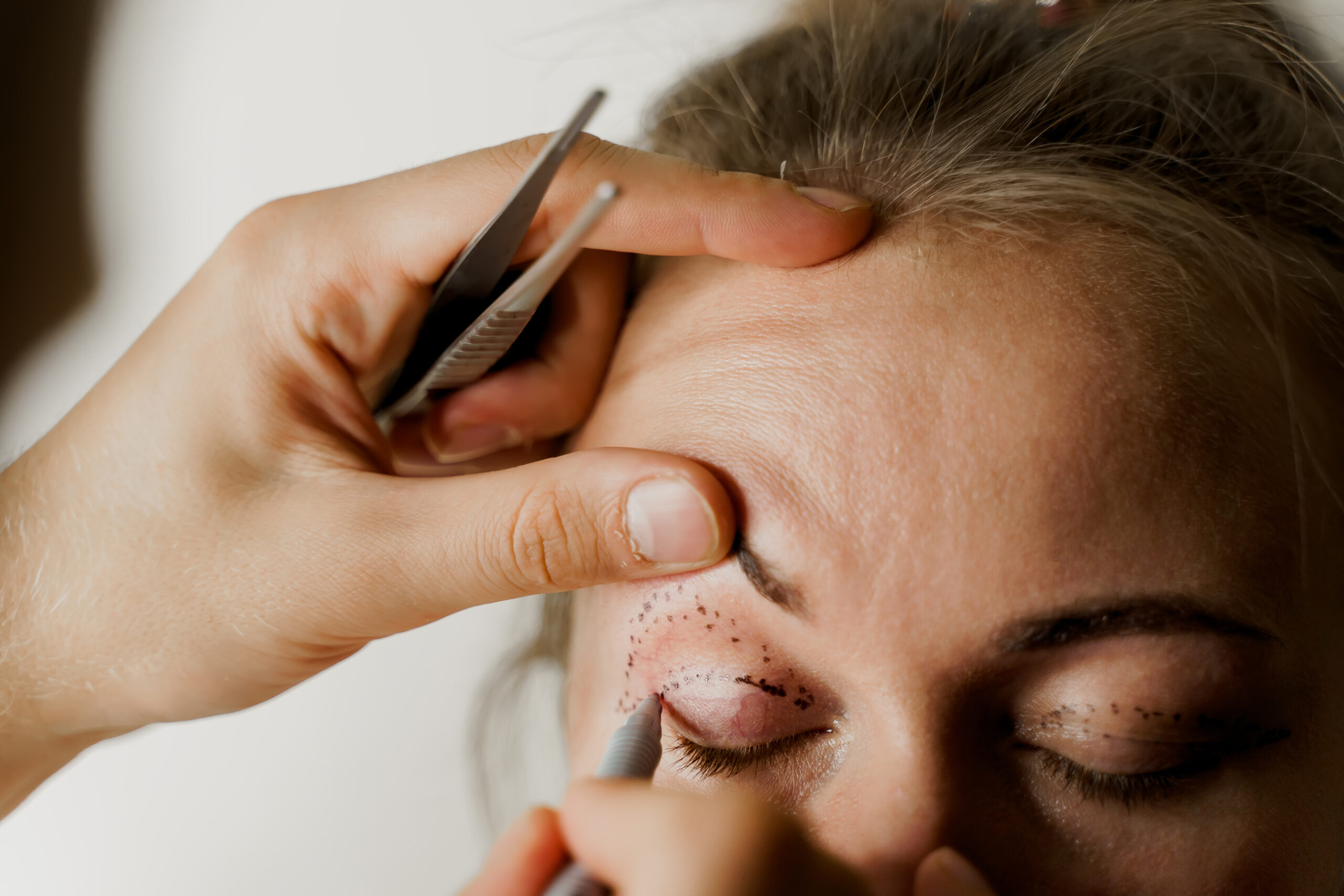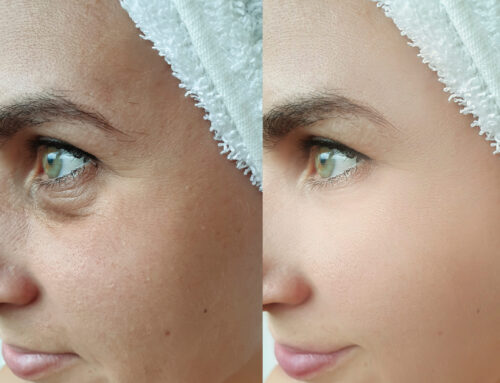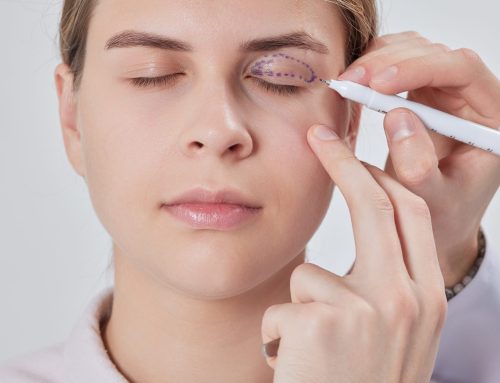
Did you know that over 115,000 Americans opt for eyelid surgery every year, making it one of the top five most popular cosmetic procedures in the U.S.? Blepharoplasty, or eyelid surgery, not only enhances your appearance but can also improve vision in cases of drooping lids. But with every procedure comes a common concern: How long does eyelid surgery take to heal?
At Stevens Facial Plastic & Laser Center, we understand how important it is to know what to expect from the healing process. This guide will walk you through the stages of eyelid surgery recovery, what symptoms are normal, what to avoid, and when you’ll begin to see your refreshed, rejuvenated look. Whether you’re in Fort Myers, Naples, or Punta Gorda, FL, you’ll leave with the clarity and confidence you need to make informed decisions about your care.
What Is Eyelid Surgery?
Eyelid surgery, also known as blepharoplasty, is a procedure designed to improve the appearance and function of the upper or lower eyelids. During surgery, excess skin, muscle, and sometimes fat are carefully removed or repositioned to reduce puffiness, sagging, and under-eye bags. This rejuvenates the eye area, creating a more youthful and rested look.
We perform eyelid surgeries tailored to each patient’s specific goals, whether cosmetic or functional. Many patients across the Gulf Coast choose eyelid surgery to enhance their appearance or to improve vision when drooping eyelids interfere with daily life.
Immediate Recovery: The First 1–3 Days
The first few days following eyelid surgery are often the most uncomfortable, but recovery begins quickly with proper care. Swelling and bruising usually peak around 48 to 72 hours after surgery. It’s normal to have some tightness around the eyes and mild blurry vision caused by ointments or swelling.
Cold compresses and elevating the head while resting can significantly reduce swelling. Your surgeon will provide you with specific aftercare instructions, which may include applying medicated ointments to keep the incision sites moist, avoiding touching or rubbing the eyes, and taking any prescribed medications to manage discomfort or prevent infection. While you’ll need to rest, many patients can still engage in light activities like watching TV or reading by the end of the third day.
The First Week: Gradual Improvement
By the end of the first week, you’ll likely notice that the worst of the swelling and bruising has started to subside. Discoloration around the eyes may linger, but should gradually fade. If your surgeon used non-dissolvable sutures, they are typically removed around day five.
While you may start to feel more like yourself, it’s important to continue avoiding strenuous activity, heavy lifting, or anything that might strain your eyes. Most patients take about a full week off work and social activities to allow their bodies to rest and heal properly. We encourage gentle movement around the house but emphasize the importance of not overdoing it during this crucial early phase of recovery.
Week Two: Visible Progress
Around the two-week mark, your face will look and feel significantly better. Swelling and bruising are usually minimal by this stage, and many patients feel comfortable enough to return to work or social engagements. If approved by your surgeon, light makeup may be used to cover any remaining discoloration.
However, it’s still important to be cautious. Avoid direct sun exposure to protect your healing skin, as the delicate tissue around the eyes is particularly vulnerable during this time. Wearing sunglasses and applying broad-spectrum sunscreen can help prevent pigmentation issues. Additionally, it’s best to continue avoiding smoking, alcohol, and strenuous exercise until cleared by your doctor.
Weeks 3–4: Almost There
By the third week, most of the physical signs of surgery are greatly diminished. Incision lines continue to fade, and any remaining swelling or tightness around the eyes is usually subtle and improving each day. Many patients at this point feel fully recovered in daily life and often receive compliments on their refreshed appearance without others realizing they’ve had surgery.
If there is any lingering numbness or sensitivity, it typically resolves on its own. You can resume moderate physical activity if approved by your surgeon, but it’s still wise to avoid anything that might place undue pressure on the eye area. Most patients feel confident and photo-ready by the end of week four.
Full Recovery Timeline: 6 Weeks and Beyond
Although you’ll likely look and feel great within the first month, complete healing takes time. Internal tissues continue to settle and strengthen for several more weeks. For some patients, particularly those who had both upper and lower eyelid procedures, minor residual swelling, especially in the morning, can persist up to two or three months.
By six to eight weeks, most people consider themselves fully healed. Incision lines become increasingly faint, and your final results will be much more apparent. Throughout the recovery period, Stevens Facial Plastic & Laser Center provides supportive follow-up care to ensure everything is healing correctly and to answer any questions that arise along the way.
Factors That Affect Healing Time
Healing after eyelid surgery varies from person to person and depends on several individual factors. Age and skin elasticity play a major role; patients with younger, more elastic skin typically heal faster than older individuals. The type of surgery also matters. Upper eyelid surgery alone generally has a shorter recovery time than lower eyelid or combined procedures.
Lifestyle choices can significantly impact healing as well. Smoking, alcohol consumption, and poor nutrition may delay recovery, while a balanced diet rich in vitamins A and C can support tissue repair. Existing medical conditions like diabetes or autoimmune disorders may also prolong the healing process. That’s why it’s so important to discuss your full medical history with your surgeon during the consultation phase.
Supporting a Smooth Recovery
While your body has its own natural pace of healing, you can support the process by following some basic care principles. Resting with your head elevated, especially during the first week, helps reduce swelling and improve circulation. Using cold compresses as recommended by your surgeon can also be very effective during the initial days.
It’s important to avoid eye strain from reading or using screens for prolonged periods, especially during the first several days post-surgery. Staying hydrated and eating a nutrient-rich diet full of protein, fruits, and vegetables can help your body rebuild tissue more efficiently. Above all, carefully following your surgeon’s post-op instructions will ensure the smoothest and safest recovery possible.
At Stevens Facial Plastic & Laser Center, we make sure every patient leaves with a personalized aftercare plan and direct access to our expert team for questions and concerns.
When to Contact Your Surgeon
While complications from eyelid surgery are uncommon, it’s important to know what signs may require prompt attention. If you experience severe pain that isn’t relieved by medication, sudden swelling or bleeding, vision changes, or signs of infection such as fever, increased redness, or discharge from the incision sites, contact your surgeon right away.
Our team is committed to patient safety and satisfaction, and our office in Fort Myers, FL, is available to provide reassurance and medical support at any point in your recovery journey.
Is Eyelid Surgery Worth It?
For many people, the results of eyelid surgery are both rewarding and transformative. Whether you’re bothered by under-eye bags, tired-looking eyes, or drooping lids that interfere with vision, blepharoplasty can offer long-lasting and natural-looking improvement.
Patients often report feeling more confident, refreshed, and alert after surgery. The procedure can take years off your appearance while still leaving you looking like yourself, just more rested and vibrant. We take pride in achieving results that are beautifully subtle and tailored to each patient’s features and goals.
Serving Southwest Florida With Compassion and Expertise
If you live in Bonita Springs, Cape Coral, Naples, Port Charlotte, or Punta Gorda, you’re within reach of expert care from one of Southwest Florida’s most trusted facial plastic surgeons. Stevens Facial Plastic & Laser Center offers advanced eyelid surgery and comprehensive support throughout the recovery process to ensure every patient feels confident and cared for.
A Clearer View of Recovery
So, how long does eyelid surgery take to heal? While the initial recovery usually takes two to four weeks, full healing can extend to six or eight weeks, depending on the procedure and the individual. With the right care and guidance, the journey can be smooth, empowering, and well worth it.
At Stevens Facial Plastic & Laser Center, we’re here to support you from consultation to complete recovery. We bring deep expertise, precision, and a compassionate approach to every case, helping patients look and feel their best with confidence.
If you’re ready to explore how eyelid surgery can rejuvenate your appearance and improve your quality of life, we invite you to schedule a consultation today. Let’s take the next step together.


